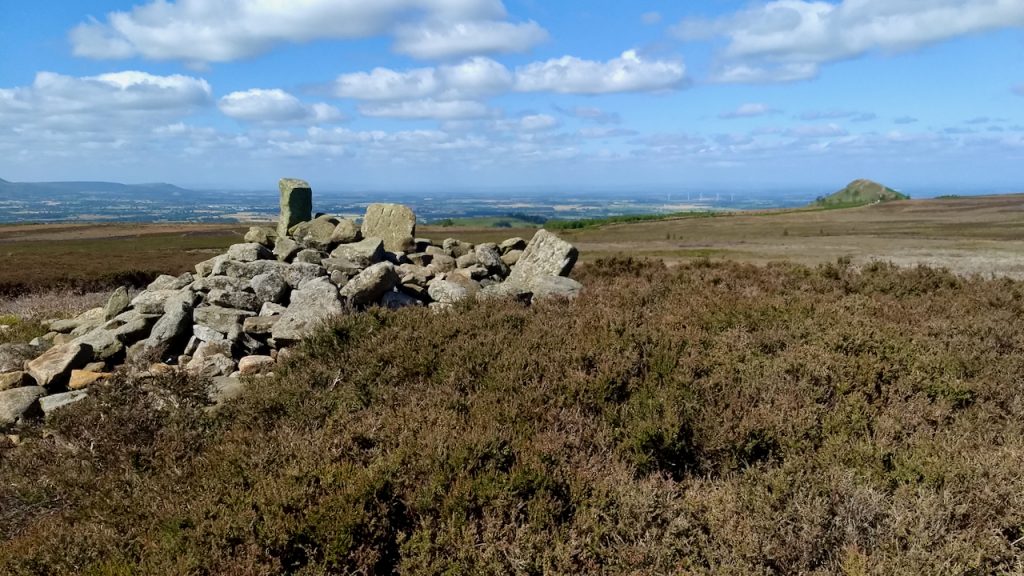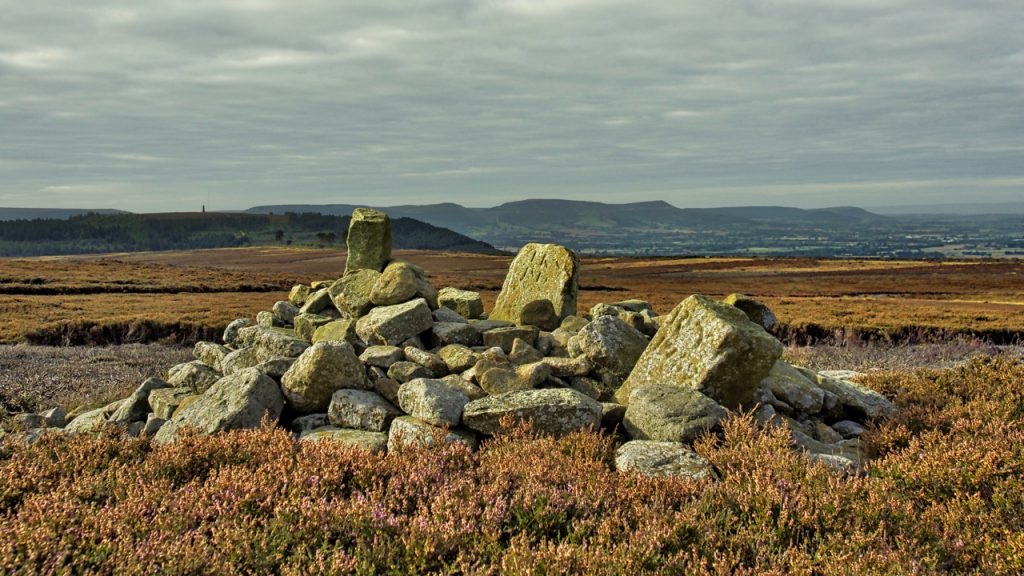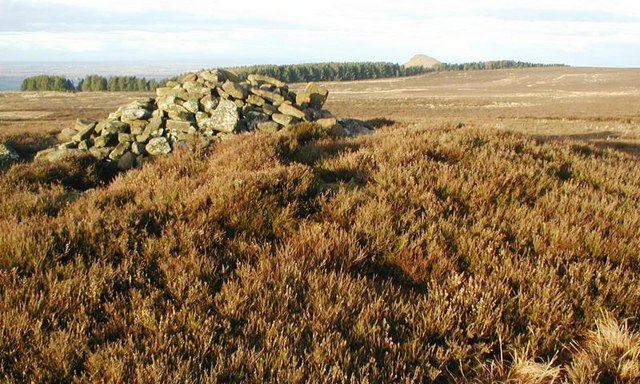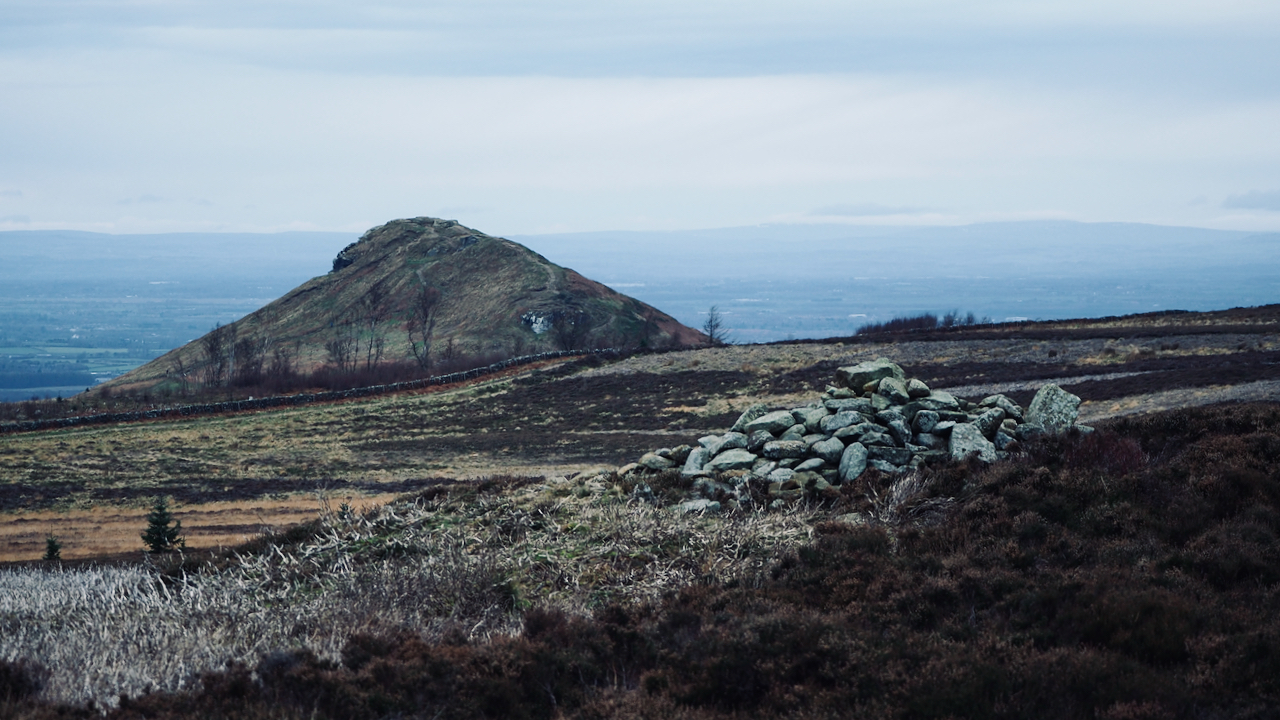I’ve photographed it many times before: —



It’s tempting to think of cairns as permanent, but there has been some noticeable movement in this pile of stones since 2007. I saw today the gamekeepers have buried an animal trap in a metal box amongst the stones so this may have contributed.
This is a ‘round cairn‘, a prehistoric funerary monument dating to the Bronze Age — c.2000-700 BC. It may have been constructed as a stone mound covering single or multiple burials, but a central depression suggests there has been some previous excavation1Heritagegateway.org.uk. (2012). Heritage Gateway – Results. Monument Number 27717. [online] Available at: https://www.heritagegateway.org.uk/Gateway/Results_Single.aspx?uid=27717&resourceID=19191 [Accessed 13 Dec. 2021].. It has been used as a post-medieval boundary marker2Historicengland.org.uk. (2012). PAIR OF BOUNDARY STONES, APPROXIMATELY 1850 METRES TO SOUTH OF HOME FARMHOUSE, HUTTON LOWCROSS AT NGRN2596 125, Guisborough – 1159609 | Historic England. [online] Available at: https://historicengland.org.uk/listing/the-list/list-entry/1159609?section=official-listing [Accessed 13 Dec. 2021]..
Elsewhere cairns have been used to mark trails, dangerous spots, view points, or even buried caches. The word itself comes from the Gaelic ‘chàrn‘ for a heap of stones or rocky hill, and in the Highlands, a tradition was for each man to put a stone in a pile before a battle. Those who survived each removed a stone and all remaining were built into a memorial cairn.
Cairns have also marked coffin routes or corpse roads, which were used by funeral corteges, each bearer putting a stone on the pile as they proceeded to the graveyard.
Today, walkers often think it is traditional to carry a stone from the bottom of a hill or mountain to place it on a cairn at its top. This is a custom which is frowned upon by archaeologists and park rangers, and much effort goes into removing these ‘modern’ cairns.
There is a traditional Scots blessing ‘Cuiridh mi clach air do chàrn’ — literally ‘I will add a stone to your cairn‘ — meaning ‘I will honour your memory after you are gone‘.
- 1Heritagegateway.org.uk. (2012). Heritage Gateway – Results. Monument Number 27717. [online] Available at: https://www.heritagegateway.org.uk/Gateway/Results_Single.aspx?uid=27717&resourceID=19191 [Accessed 13 Dec. 2021].
- 2Historicengland.org.uk. (2012). PAIR OF BOUNDARY STONES, APPROXIMATELY 1850 METRES TO SOUTH OF HOME FARMHOUSE, HUTTON LOWCROSS AT NGRN2596 125, Guisborough – 1159609 | Historic England. [online] Available at: https://historicengland.org.uk/listing/the-list/list-entry/1159609?section=official-listing [Accessed 13 Dec. 2021].

Leave a Reply